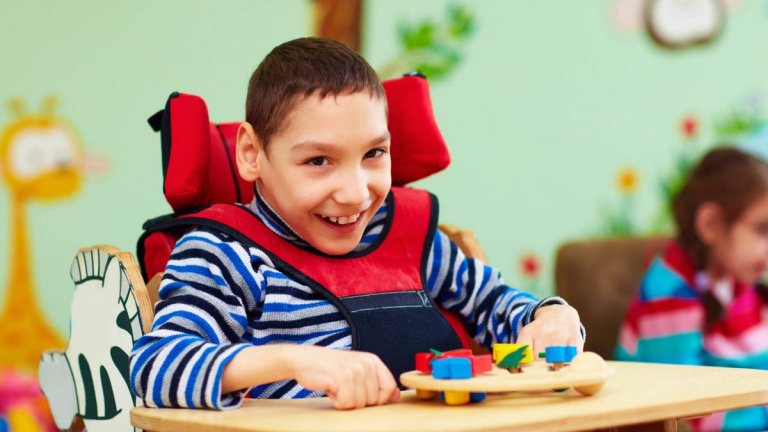The Individuals with Disabilities Education Act (IDEA) defines low-incidence disabilities as Section 1462(c):
- a visual or hearing impairment, or simultaneous visual and hearing impairments;
- a significant cognitive impairment; or
- any impairment for which a small number of personnel with highly specialized skills and knowledge are needed in order for children with that impairment to receive early intervention services or a free appropriate public education.
The State of Texas has several disability categories that could be considered low-incidence:
- Deaf or Hard of Hearing/ Auditory Impairment (AI)
- Autism (AU)
- Deaf-Blindness (DB)
- Intellectual Disability (ID)
- Multiple Disabilities (MD)
- Orthopedic Impairment (OI)
- Other Health Impairment (OHI)
- Traumatic Brain Injury (TBI)
- Visual Impairment (VI)
Case-studies of Students with Low-Incidence Disabilities
What does this mean exactly? To help understand, let’s look at some fictional students who have low-incidence disabilities. Keep in mind, these profiles do not cover all our students, but it will give us a better idea of who are our students with low-incidence disabilities:
“Amy” is a student with an identification of Intellectual Disability (ID) as indicated by significantly below average intellectual functioning along with deficits in adaptive behavior. Genetic testing has confirmed she has Down Syndrome.
“Maria” is a student with an identification of Deaf-Blindness (DB) as indicated by concomitant hearing and vision impairments and her needs cannot be met in special education programs solely for students with deafness or students with blindness. She has a medical diagnosis of CHARGE syndrome.
“Charlie” is a student with an identification of orthopedic impairment. He has a medical diagnosis of Cerebral Palsy. He requires a motorized wheel chair to access the school and classroom. In addition, he uses a Speech Generating Device to communicate and complete his school work with the help of an aide.
“Stacy” is a student with an identification of Multiple Disabilities (MD) due to her physical impairment, visual impairment, and cognitive impairment.
How to Support Students with Low Incidence Disabilities
These cases do not cover everyone with low-incidence disabilities. They do, however, help us discuss a few key points that IDEA describes as appropriate considerations for these students. As mentioned before, these students and their teachers benefit from highly specialized support and training.
For example, having access to Speech, Physical, and Occupational therapists could help the teachers understand the unique needs of these students and how to provide instruction in the classroom. In addition, teachers for these students and these specialists should use interdisciplinary collaboration to achieve the best results in early intervention, education, and transition.
Finally, IDEA wants personnel who work with students with low-incidence disabilities to be trained and use universally designed assistive technology support and services.





Thank you for sharing knowledge and informative content with us. You enlighten us on what a low-incidence disability is. You are awesome!
Thank you for shedding light on low-incidence disabilities! It’s essential to raise awareness about these often-overlooked challenges. Understanding the specific needs of individuals with low-incidence disabilities can help us create more inclusive environments. Great post!
Thank you for this informative post! It really helped clarify what low-incidence disabilities are and their impact on individuals and families. I appreciate the emphasis on the need for awareness and support in educational settings. Looking forward to more insights on this topic!
Thank you for shedding light on low-incidence disabilities! It’s so important to raise awareness about these unique challenges and ensure that everyone understands the support needed for individuals affected. I appreciate the detailed information and resources you provided.